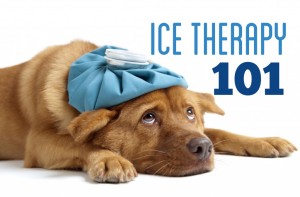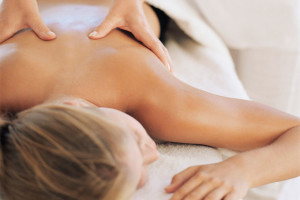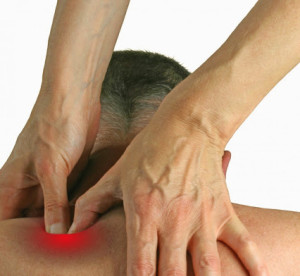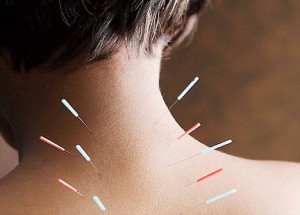Soft Tissue Rehabilitation
Pain and muscle spasms are common responses to injury. The unfortunate fact is that many people who suffer from
whiplash will never fully recover from their soft tissue injuries. While most people are not significantly disabled by their chronic aches, pain and stiffness, it is important, nonetheless, to minimize the degree to which soft tissue injuries become permanent. In this article we will cover the most important therapies that help soft tissues heal, such as cold therapy, massage therapy, and trigger point therapy, stretching and exercise rehabilitation.
When Should I Use Ice or Heat?
Ice has long been used to treat many painful conditions and is most often used to reduce swelling and help control pain immediately after an injury and throughout the inflammatory stage. When ice packs are applied they can decrease the temperatures of the surrounding tissues by 10-15 degrees Fahrenheit, slowing down the metabolism in the tissues and reduces inflammation, and pain. It is useful in all live grades of whiplash injury severity and is useful throughout the recovery process to help reduce flare-up symptoms. Cold applied to the area decreases the flow of fluids into the tissues and slows the release of chemicals that cause pain and inflammation. Cold decreases feeling in an area by reducing the ability of the nerve endings to conduct impulses. The pain-relieving effect of ice results from decreased firing of the pain nerves and a relaxation of the muscle fibers. Cold also decreases the activity of cells, which works to reduce swelling and internal bleeding at the site of acute injury. Cooling the deep tissue also reduces muscle spasm by reducing the muscle’s ability to maintain a contraction.
immediately after an injury and throughout the inflammatory stage. When ice packs are applied they can decrease the temperatures of the surrounding tissues by 10-15 degrees Fahrenheit, slowing down the metabolism in the tissues and reduces inflammation, and pain. It is useful in all live grades of whiplash injury severity and is useful throughout the recovery process to help reduce flare-up symptoms. Cold applied to the area decreases the flow of fluids into the tissues and slows the release of chemicals that cause pain and inflammation. Cold decreases feeling in an area by reducing the ability of the nerve endings to conduct impulses. The pain-relieving effect of ice results from decreased firing of the pain nerves and a relaxation of the muscle fibers. Cold also decreases the activity of cells, which works to reduce swelling and internal bleeding at the site of acute injury. Cooling the deep tissue also reduces muscle spasm by reducing the muscle’s ability to maintain a contraction.
The Benefits of Massage Therapy
Massage is the practice of applying pressure or vibration to the soft tissues of the body, including muscles, connective
tissue, tendons, ligaments, and joint, and can be focused to specific parts of the body to heal injuries, or to the whole body to help relieve stress and tension. When most people think of massage, they think of a nice relaxing body massage that feels great and will help them become more relaxed. Unfortunately, for treating soft tissue injuries, this type of massage is not as useful as two other forms of massage – deep tissue massage and myofascial release.
Deep tissue massage techniques are generally designed for more focused massage work. Working a specific joint, muscle or muscle group, the practitioner can access deeper layers of the soft tissue. Starting superficially (outer-most) and easing into the depth of the muscle slowly often allows more movement. This is the recommended approach in this modality since each person experiences pressure differently. If the pressure is applied too deeply or too quickly, the muscle may tighten to protect that area, and unnecessary damage or inflammation can be induced.
Very little lubricant is used as the pressure doesn’t travel much over the skin.
Myofascial release refers to the manual technique for stretching the fascia with the aim to balance the body. Fascia is
located between the skin and the underlying structure of muscle and bone, it is a seamless web of connective tissue that covers and connects the muscles, organs, and skeletal structures in our body. Injuries, stress, trauma, and poor posture cause the fascia to become tight and inflamed. Because of the web-like structure of fascia, tightness in one part of the body can spread to other places in the body – much like pulling a thread in a piece of fabric. The goal of myofascial release is to release fascial restriction and restore its tissue.
What is Trigger Point Therapy?
Technically, a trigger point is defined as “a highly irritable localized spot of exquisite tenderness in a nodule in a palpable
taut band of muscle tissue.” In short, this means that a trigger point is a ‘knot’ of muscle that you can feel with your fingers and hurts a lot when you press on it. A trigger point is a small patch of muscle in a state of continuous spasm that is very sore and which interferes with normal blood circulation and function of the whole muscle. Like a rubber band with a small section that has lost its elasticity and has instead become hardened and brittle, trigger points cause the muscle to be tighter, stiffer, weaker and yet very tense at the same time. Trigger points are very sore to the touch, and they may feel like a thick band or knot that you can roll your fingers over.
Trigger points frequently form in injured muscles and can lead to a wide range of conditions. such as headaches. neck and shoulder pain, low back pain, arm and leg pain, as well as tennis elbow and carpal tunnel syndrome. They are the source of the pain in many joints of the body, such as the shoulder, wrist, hip, knee and ankle, and are often mistaken for arthritis, tendonitis, bursitis, or ligament injury. Trigger points frequently cause symptoms such as dizziness, earaches, sinusitis, nausea, heartburn, heart arrhythmia and numbness in the hands and feet. Even fibromyalgia may have its beginnings with trigger points. Eventually, some of the structural changes may be irreversible if trigger points are left untreated for long enough.
Trigger point therapy is a bodywork technique that involves the applying of pressure or ice massage to trigger points in order to relieve pain and dysfunction in other parts of the body. It is sometimes also called myofascial (“myo-”
meaning muscle, “fascial” meaning connective tissue) trigger point therapy. Massage of the trigger point flushes the tissue and helps the trigger point`s contracted sarcomeres to begin to release. In dealing directly with the trigger point, massage is the safest, most natural and most effective form of pain therapy. To diffuse a trigger point, pressure is applied to the area for approximately 10 seconds, released, and then applied again for 10 more seconds in a pumping action while you breathe deeply.
After a series of treatments, circulation is restored, spasms disappear, irritation of the nerve endings in the muscle ceases and the muscle is able to function normally again. As an added benefit, releasing trigger points also releases endorphins, which help to reduce stress and tension in other parts of the body.
Is Acupuncture Helpful?
Acupuncture is a form of Eastern medicine that is over 5,000 years old. Very basically, acupuncture involves the specific
placement of very fine sterile needles in the skin, sometimes in conjunction with small electrical stimulation, in order to influence the physiological functioning of the body. Although acupuncture was not taken seriously by traditional medicine many years ago, it has become a widely accepted treatment for many conditions and is now practiced by medical and chiropractic physicians alike. It is particularly useful in the early stages of treatment, when the patient is in acute discomfort.
Is it Too Early to Start Stretching?
Following an injury, therapeutic stretching is an important way to prevent scar tissue from forming. Even after the injury has healed, maintaining a regular stretching program helps keep tissues flexible, increases mobility, and protects you from new injuries.
In order to experience the benefits of stretching, however, it is important that you stretch correctly. This is especially
important in the weeks following an injury when your muscles are weak and susceptible to re-injury. Stretching your muscles too hard, bouncing while holding a stretch or stretching your muscles when they are too cold can injure your muscles and lead to a worsening in your flexibility, rather than an improvement. Proper stretching technique is easy, provided you follow a few simple rules:
The first rule is to never stretch your muscles too hard. You should only stretch to the point where you can feel a mild pull on the muscle. If you attempt to stretch further, you may cause small muscle tears and a reflex tightening of the muscle. When this happens, it can lead to muscle scarring and can counteract the benefits that stretching provides.
The second rule is to never bounce while stretching, when you bounce, you momentarily force your muscles to stretch
further than they should, resulting in the same over-stretching effects just mentioned.
The third rule is to only stretch your muscles when they are warmed up. Years ago. it was taught that you should stretch before you exercise, but recent research has found that you should stretch only after your muscles have been fully warmed up. Muscles are a lot like plastic. If you heat plastic, you can bend it and stretch it without it breaking. However, if you try to bend or stretch the same piece of plastic when it is cold, it will break. When your muscles are warm, they can be stretched without undue strain. But if you try to stretch your muscles when they are cold, you can injure them by causing small tears in the muscle tissue. For this reason, it is important to stretch your muscles only after you have warmed them up with some gentle exercise.
Specific stretches to help you overcome the effects of a whiplash injury can be found on this site (if you can’t find them, they should be up here shortly – please check back soon). As long as you follow these three simple rules – gentle stretching, not bouncing and warming up your muscles before stretching – you will maximize the effectiveness of your
stretching routine while minimizing the chances of injuring your muscles.
What Kind of Exercise is the Best?
As we have discussed in previous articles, one of the negative consequences of whiplash injuries is muscle weakness. The only way to restore normal muscle strength and coordination is through exercise. There are two types of exercises that we will be focusing on in this article. The first type is strength exercise. Exercises designed to increase strength are
especially useful to improve posture, muscle balance and, of course, strength. The second type of exercise is called “aerobic exercise” and is designed to help you develop endurance and coordination. These exercises, such as walking, climbing stairs, bicycling and the like, are low-intensity, long duration exercises.
Strength Exercise
Strength training differs from aerobic training in three important ways. First, strength training involves activities that
are more intense and much shorter in duration than aerobic activity, for example doing push-ups or sit-ups. Second, while aerobic training primarily improves the health of your cardiovascular system, strength training primarily improves the health of your muscles, bones and joints. Third, while aerobic activity should be performed almost every day for maximum benefit, you only need to engage in strength training two to three times per week. The benefits of strength training include:
- Increased muscle and bone strength
- Improved muscle tone and body shape
- Improved hormone function
- Improved mood and mental functioning
- Decreased serum cholesterol
- Decreased stress
- More restful sleep
- Increased metabolism
- Prevention of muscle loss associated with dieting
To benefit from strength training, it is not necessary that you spend long grueling hours in the gym every day. In fact,
you can experience a significant improvement in your strength and muscle tone by weight lifting for one hour, two or three times a week!
The key to successful strength training is not the amount of time you spend; it’s the intensity that is important. The harder you work your muscles during your strength workouts, the quicker you will see improvements.
Aerobic Exercise
Aerobic means “using oxygen” and aerobic exercises are those that utilize oxygen during the activity. Aerobic exercise
trains the body to utilize oxygen more efficiently and improves your overall cardiovascular fitness. Aerobic activities are those that are performed for an extended period of time at a low intensity. Examples of aerobic activities are biking, aerobic walking, swimming, jogging, inline skating, aerobic dance and using an elliptical trainer. The benefits of aerobic activity include:
- Improved breathing
- Increased energy throughout the day
- Improved heart health and cardiac output
- Decreased blood pressure
- Decreased serum cholesterol
- Decreased stress
- More restful sleep
- Improved mood and mental functioning
- Improved digestion and bowel function
For maximum benefit, you should engage in at least 20 minutes of aerobic activity five or six days per week. If you
can already do more than this, great! For those who have not engaged in regular activity for a while, even 10 minutes a day will be an accomplishment.
During aerobic exercise, you should be able to carry on a conversation without feeling too winded. If you are breathing
too heavily to carry on a conversation easily, you should ease up a bit. As you become healthier, you will be able to increase the intensity of your activity without feeling short of breath.
Exercise Safety
Be sure to pay attention to your body. When you are recovering from an injury, your muscles are much more fragile than
usual. If your neck or back begins to hurt from a particular exercise, start out by doing an less intense exercise and slowly work your way tip to higher intensity ones. Listening to your body will help you avoid potential injuries that could set you back. During your recovery from a whiplash injury is not the time to try to prove how strong you are. If you try to do too much too quickly, you will actually delay your progress.
If you are not active now start slowly. Try to walk just four minutes per day for the first week. Walk eight minutes per
day the next week. Stay at eight-minute walks until you feel comfortable. Then increase your walks to 12 minutes. Slowly
lengthen each walk by four minutes per week until you reach 20 minutes per day. Once you reach 20 minutes per day, you can work on quickening your pace to get your walking into the aerobic range. Please be patient! You will be much better off in the long run if you start slow and build slow.
You can do many activities in your home. There are some advantages to exercising in health clubs, including having
access to a wider variety of high quality exercise equipment, and being around people who can be a source of inspiration and support.
A Comprehensive Plan
Whiplash injuries are very serious. If they are not treated properly, you can end up with significant long-term pain and
loss of normal movement. It is impossible to overstate the importance the soft tissue rehabilitation therapies described in this article. Each of them has a role in ensuring that your injury heals to the greatest degree possible. In the article, we
will be talking about activities you can do at home to maximize your rate of healing and to minimize your risk of re-injury.
If you haven’t found a great chiropractic clinic to assist you with a proper rehabilitation program for your injuries, consider choosing a great one from OUR LIST!
